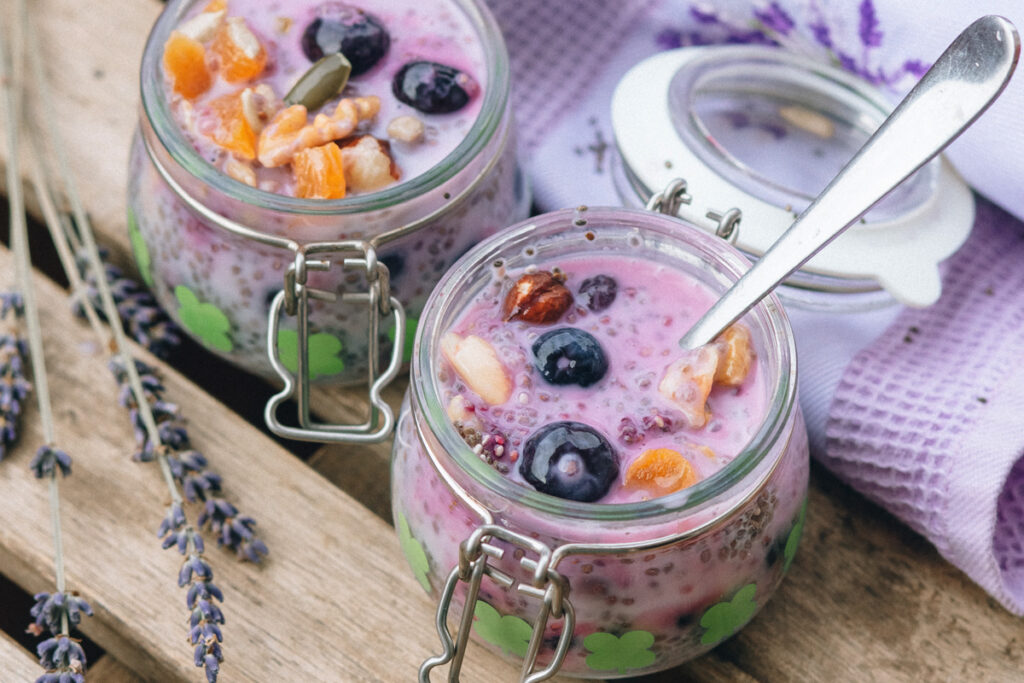10 Superfoods for Women
Tara Gidus Collingwood, MS, RDN, CSSD, ACSM-CPT

As we age, our bodies go through some major physiological changes. Women are susceptible to bone loss, muscle loss, hormonal changes, and the dreaded middle-age spread. We see and feel these changes in our achy joints, vision impairments, heart complications, weight gain, decreased memory retention, and lack of energy — all of which can be tied directly to nutrition. And guess what can accelerate all of this? Stress! And since losing one’s spouse is classified as the most stressful life event, I’m willing to bet you’ve had some stress.
What exactly is a “superfood?” The word superfood is really a marketing term, not a scientifically-backed term. Superfoods are generally very high in nutritional value but don’t have a lot of calories.
These 10 superfoods boast a high nutrient-to-calorie ratio to keep your body performing optimally:
1. Salmon or tuna. The American Heart Association recommends eating fish two times a week, particularly fatty fish like salmon or tuna. Why? Fatty fish are higher in omega-3 fatty acids, which fight inflammation and remove triglycerides from the blood. Better yet, fish is a complete protein, meaning it contains all of the essential amino acids. Protein is what our bodies use for growth, maintenance, and repair. You may stop growing taller in your teens, but these three processes continue in your cells for the rest of your life.
2. Chia. Yes, they are the same seeds used to make those Chia pets planters! But don’t eat the seeds that come with the planter — they are not approved for human consumption. Go to a grocery store to get them! These tiny black seeds are one of the healthiest foods around. Of particular interest are chia’s concentrations of fiber and healthy fat. One ounce contains 11 grams of fiber and 5 grams of omega-3 fatty acids. Fiber and omega-3s work together to keep your heart healthy, a benefit we could all use more of. After all, heart disease remains the leading cause of death in the United States for both women and men. If you’re not up for chia, go for ground flax seeds for the same benefits.
3. Black beans. Black beans are an excellent source of soluble fiber, the type of fiber that is difficult to come by. Soluble fiber is a nutrient key to blood sugar regulation and cardiovascular health. It works to slow the rate at which food moves through the digestive tract, meaning you don’t experience blood sugar highs and low as easily. It also helps to pull cholesterol from the blood, lowering your LDL cholesterol level and reducing your risk of coronary heart disease. All beans are good if you prefer kidney beans, chickpeas, lentils, cannellini beans, and more.
4. Kale. Kale is insanely rich in vitamins A, K, and C. In fact, one cup of this dark, leafy superfood contains over 100% of the daily recommended value for each of these vitamins. As we age, each of these vitamins plays an important role in maintaining our health: Vitamin A for vision; vitamin K for blood clotting; and vitamin C for the growth and repair of tissues. To boot, kale is rich in potassium, an electrolyte essential to heart health. If you don’t love kale, just eat any leafy greens such as spinach, collard greens, Swiss chard, arugula, etc.
5. Blackberries. Did you know blackberries contain higher levels of fiber and antioxidants than most other berries? Fiber is wonderful for all of the aforementioned reasons, but it’s also beneficial for maintaining a healthy weight. As for antioxidants, blackberries contain concentrated levels of flavonoids. Consuming flavonoid-rich foods is a natural brain booster — they help reduce age-related declines in motor skills and cognitive activity. All berries, such as raspberries, strawberries, blueberries, or cranberries, are very high in flavonoids as well!
6. Almonds. Almonds are the most nutrient-dense nut, ranking highest in protein, calcium, vitamin E, magnesium, and folate. Almonds are also high in manganese and copper. These two trace minerals are necessary to form collagen, the connective tissue found in our bones, muscles, skin, and tendons. When collagen breaks down we show visible signs of aging, but eating the right food helps protect collagen from breaking down and keeps our bodies looking (and feeling) younger. Other nuts to consider are pistachios, walnuts, and pecans for good health.
7. Kefir. Kefir is a fermented milk product that is similar to yogurt, but with a thinner consistency. The fermentation process is what gives kefir such a high nutritional value. How so? The bacteria responsible for its fermentation are probiotics. Probiotics are the healthy bacteria that live in the gut and aid in digestion. Keeping the digestive tract healthy helps the body eliminate toxins and reduces the risk of colon cancer. As an added bonus, kefir is a dairy product with an amino acid profile similar to milk, making it the second complete protein on our list. And since dairy is an excellent source of vitamin D and calcium, kefir helps to fight bone loss and maintain bone strength!
8. Russet potatoes. Potatoes have earned a bad rap, but they’re actually a nutrient-rich superfood. Loaded with more potassium than a banana, a whole potato can help prevent high blood pressure and reduce your risk for stroke and heart disease. In addition to potassium, potatoes are packed with antioxidants. When measured against other foods, potatoes earned an ORAC score of 13.2, making them higher in antioxidants than carrots, kiwi, tomatoes, and sweet potatoes! (ORAC [Oxygen Radical Absorbance Capacity] scores were developed by scientists at the National Institute of Health and Aging to measure the antioxidant capacity of foods.)
9. Butternut squash. Butternut squash is a fall favorite, and for good reason. This winter squash’s orange hue means it’s high in beta-carotene, an antioxidant that is converted to vitamin A in the body. Vitamin A helps maintain vision and decreases the risk of macular degeneration. Butternut squash is also high in vitamin C. When eaten with iron-rich foods, vitamin C enhances the body’s absorption of iron, thereby reducing your risk of anemia. Other orange foods rich in beta carotene include carrots, mangos, bell peppers, and other varieties of squash.
10. Ginger. Best known for its ability to eliminate gastrointestinal discomfort, ginger is a natural remedy for nausea and vomiting — hence the popularity of ginger ale. If that weren’t reason enough to use this root in just about every dish, ginger also has anti-inflammatory properties. Give those achy joints and stiff muscles some relief by reaping the benefits of regular ginger consumption — reduced pain and improved mobility. Not a fan of cooking with ginger? You can find ginger “shots” at juice bars and many grocery stores.
Tara Gidus Collingwood, MS, RDN is a Registered Dietitian Nutritionist, Certified Personal Trainer, and fellow Wister. You can find her at dietdiva.net.

